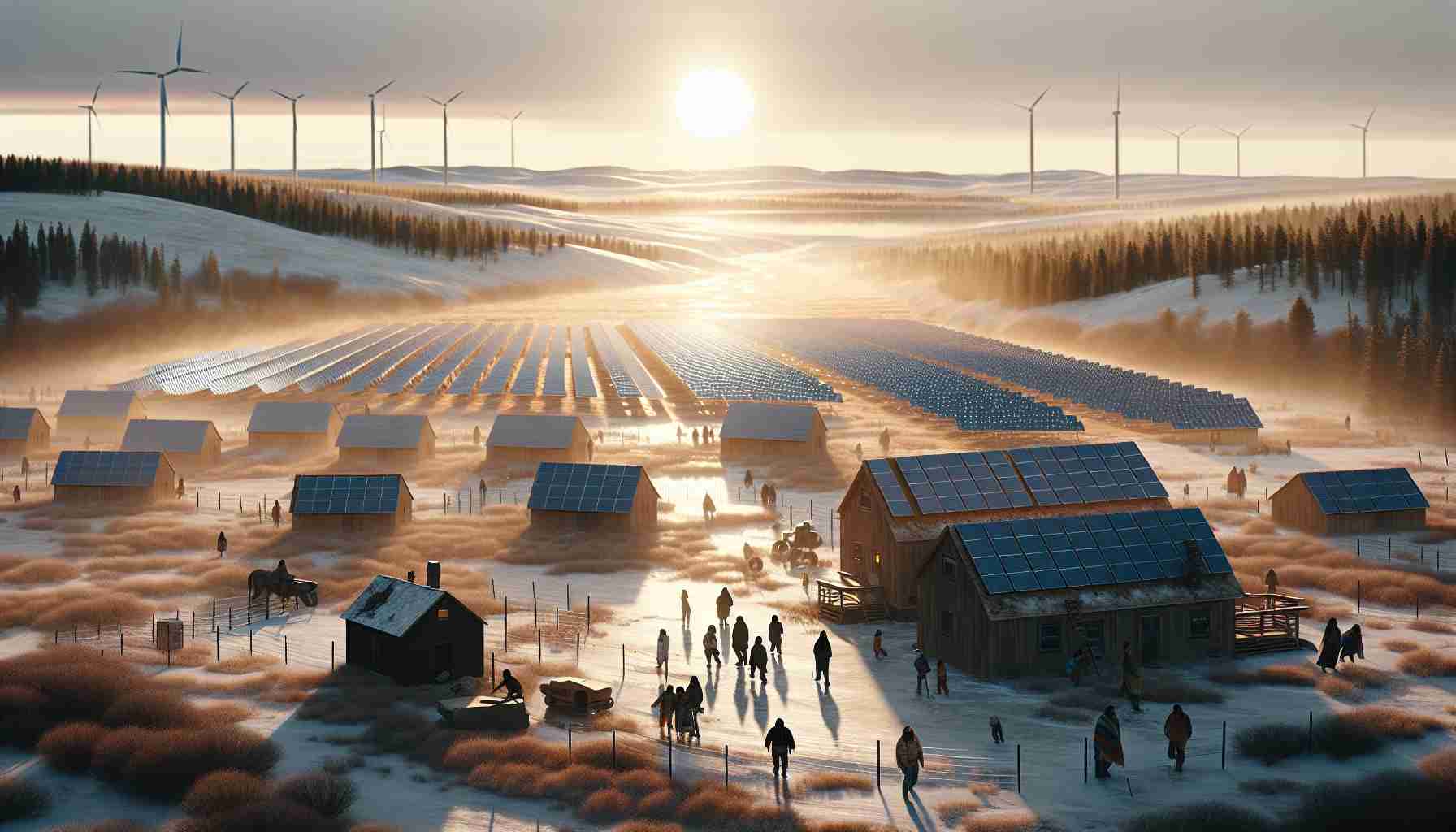In the pursuit of renewable energy and job creation, tribes on the Standing Rock Reservation in South Dakota are turning to solar power. Traditionally known for its wind energy industry, the Northern Great Plains region is now focusing on solar development as a way to empower tribal communities.
One example of this shift is the apprenticeship program run by Lightspring Solar and the SAGE Development Authority, which aims to train tribal members in solar panel installation. These apprentices have embarked on projects to install solar panels on community buildings and in small towns along Highway 1806. By prioritizing local workforce development, these tribes are reimagining the job site and utility systems with community ownership in mind.
The push for solar energy development is further supported by the 2022 Inflation Reduction Act, which provides billions of dollars in funding for renewable energy projects and climate change mitigation. These funds are accessible to a variety of organizations, including tribal governments and educational institutions.
Cody Two Bears, executive director of Indigenized Energy, believes that Native Americans and tribes in the region will lead the solar development effort in the next five years. However, challenges lie ahead. Solar still faces tough competition from wind energy, which has received more federal incentives and support over the years. Additionally, some skeptics argue that the existing state incentives and demand for solar in the Dakotas are insufficient to support a thriving solar job market.
Nevertheless, the tribes are committed to finding holistic solutions to these challenges. They recognize the need for a diverse skill set among solar installers and advocate for comprehensive training programs that include basic electrical skills. By doing so, they hope to address the persistently high unemployment rates among the young population on the Standing Rock Reservation.
As the cost of solar energy continues to decrease and federal funding becomes more accessible, the tribes on the Standing Rock Reservation are paving the way for a solar boom that could reshape the energy landscape in the Northern Great Plains region.
Frequently Asked Questions (FAQ) – Solar Power Development on Standing Rock Reservation
1. What is the focus of tribes on the Standing Rock Reservation in South Dakota?
The tribes on the Standing Rock Reservation are focusing on solar development as a way to empower tribal communities and promote renewable energy.
2. What is an example of a solar power apprenticeship program on the reservation?
An example is the apprenticeship program run by Lightspring Solar and the SAGE Development Authority, which aims to train tribal members in solar panel installation.
3. What type of projects are the apprentices working on?
The apprentices are working on projects to install solar panels on community buildings and in small towns along Highway 1806.
4. How is the solar development effort supported financially?
The 2022 Inflation Reduction Act provides billions of dollars in funding for renewable energy projects and climate change mitigation, which can be accessed by tribal governments and educational institutions.
5. Who will lead the solar development effort in the next five years?
Cody Two Bears, executive director of Indigenized Energy, believes that Native Americans and tribes in the region will lead the solar development effort in the next five years.
Definitions:
– Renewable energy: Energy obtained from sources that are naturally replenished, such as sunlight, wind, and water.
– Solar panel: A device that converts sunlight into electricity.
– Apprenticeship program: A training program in which individuals learn a trade through a combination of on-the-job training and classroom instruction.
– Community ownership: The concept of communities collectively owning and benefiting from resources or projects within their area.
Suggested Related Links:
– Standing Rock Sioux Tribe
– Solar Energy Technologies Office
– Tribal Energy Program (U.S. EPA)
The source of the article is from the blog aovotice.cz
